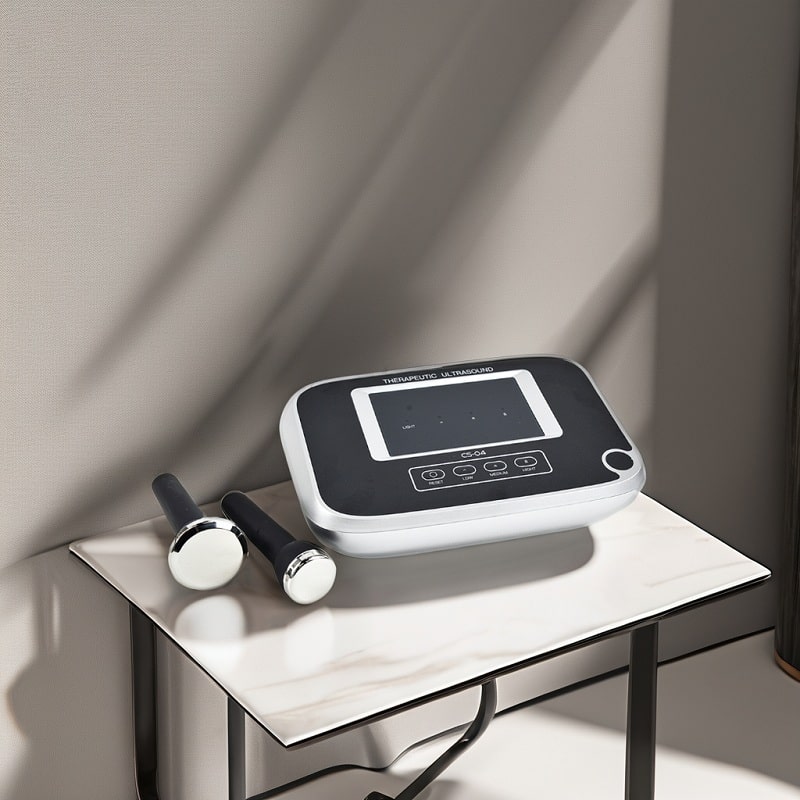How to Use an Ultrasound Therapy Machine: A Step-by-Step Guide
Release time:2024-09-30 16:18
Source:
Page view:664
Ultrasound therapy machines are commonly used in physical therapy and rehabilitation settings to treat a variety of musculoskeletal conditions. These machines use high-frequency sound waves to penetrate deep into the body, helping to reduce pain, swelling, and muscle spasms, as well as accelerate the healing process. In this article, we will provide a step-by-step guide on how to use an ultrasound therapy machine safely and effectively.
Before You Start
1. Consult a healthcare professional: Ultrasound therapy should only be performed under the guidance of a healthcare professional who can assess your condition and determine if it is an appropriate treatment for you.
2. Read the user manual: Familiarize yourself with the specific instructions for your ultrasound therapy machine, as different models may have slightly different operating procedures.
3. Prepare the treatment area: Ensure that the area to be treated is clean and free of any lotions, oils, or creams, as these can interfere with the transmission of the sound waves.

Step-by-Step Instructions
1. Connect the power source: Plug the machine into a suitable electrical outlet.
2. Apply the conductive medium: Apply a thin layer of conductive gel to the treatment area. This gel helps to transmit the sound waves evenly and reduces friction between the transducer and the skin.
3. Attach the transducer: The transducer is the part of the machine that emits the sound waves. Attach it to the machine according to the manufacturer's instructions.
4. Select the appropriate settings: Most ultrasound therapy machines have different settings for intensity, frequency, and treatment time. Follow your healthcare professional's recommendations for the appropriate settings based on your condition.
5. Start the treatment: Press the start button on the machine. The transducer will emit high-frequency sound waves into the treatment area.
6. Move the transducer: Slowly move the transducer in a circular or back-and-forth motion over the treatment area. Maintain constant contact between the transducer and the skin to ensure even distribution of the sound waves.
7. Monitor the treatment: Pay attention to any discomfort or unusual sensations during the treatment. If you experience any pain or discomfort, adjust the settings or stop the treatment and consult your healthcare professional.
8. End the treatment: When the treatment time is complete, the machine will automatically shut off. Gently wipe off the conductive gel from the treatment area and the transducer.
9. Clean and store the machine: Clean the transducer with a disinfectant wipe and store the machine in a cool, dry place.
Aftercare
1. Observe the treatment area: Check the treated area for any redness, irritation, or other adverse reactions. If any issues arise, contact your healthcare professional.
2. Follow any additional instructions: Your healthcare professional may provide specific aftercare instructions based on your condition and treatment.
Safety Precautions
1. Do not use on sensitive areas: Avoid using the ultrasound therapy machine on areas with sensitive skin, such as the eyes, genitals, or over open wounds.
2. Do not use on pacemakers: Ultrasound therapy should not be used on or near areas with implanted electronic devices, such as pacemakers.
3. Do not use if you have a history of bleeding disorders: Ultrasound therapy may increase the risk of bleeding in individuals with bleeding disorders.
4. Monitor for any adverse reactions: If you experience any unusual symptoms or discomfort during or after the treatment, stop the treatment and consult your healthcare professional.
In conclusion, using an ultrasound therapy machine can be a safe and effective way to treat various musculoskeletal conditions. However, it is important to follow the instructions provided by your healthcare professional and the user manual to ensure proper and safe use. If you have any questions or concerns, consult your healthcare professional before proceeding with the treatment.
